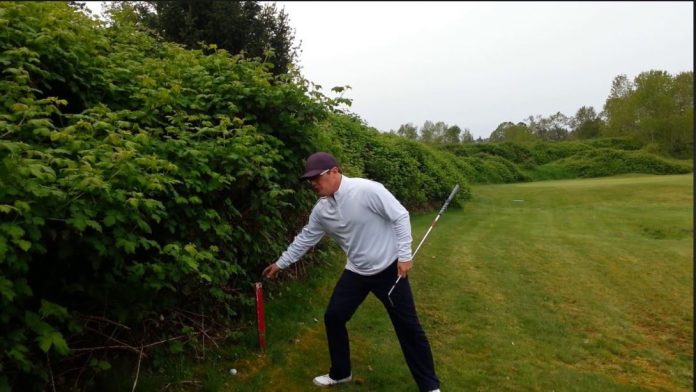
BOSTON, Mass – So I’m playing in a “big” fourball tournament last week and wouldn’t you know – a rules question comes up.
Don’t you hate when that happens and you’re playing in a “major”?
Then again – “My Bad” – for not having a clue about what the United States Golf Association calls “20 Must-Read Rules of Golf Changes for 2019.”
Here we are in July, past the half-way point of 2019, and I obviously haven’t been paying attention. My hunch is that many others are queasy when it comes to knowing the 20 changes.
In my case, I watched in horror as a competitor treaded delicately into a hazard clearly marked by two red stakes. After calling out “I found it” he declared the ball in play. He then took 6 or 7 practice swings swiping tall grass with his club.
Having spent a lifetime golfing and to protect the integrity of the field I mumbled to my partner, “WTF is he doing? He’s in the hazard grounding his club. That’s a penalty!”

There’s a problem in “thinking you know the rules” and “not knowing the rules.” Once upon a time there was a rule that touching or moving loose impediments or touching ground in a penalty area is a penalty of loss of hole in match play and 2-strokes added in stroke play.
You know the old saying. The best way to learn the rules is to have a violation called on you. It’s a rude awakening. Also, rule No. 1 in golf is never ask a competitor if he violated the rules if you don’t know the rules yourself!
How do you spell s-t-u-p-i-d?
Anyway, effective January 1, 2019, there was a major change concerning balls hit into penalty areas. You are now allowed to move loose impediments, ground your club and take practice swings without penalty, just as you can on the fairway or in the rough.
The trials and tribulations of trying to make pars is hard enough, but there is no excuse for not knowing the basic changes to the rules of golf, especially in a tournament situation!

As a refresher, listed below are the 20 changes made by the Royal & Ancient and the United States Golf Association. Enjoy & keep it in the short grass!
20 MUST-READ RULES of GOLF CHANGES for 2019
1.) Drop from knee height (NOT shoulder height)
2.) Measure the area to drop in with the longest club in your bag (except a putter)
3.) Drop in and play from the relief area
4.) When dropping back-on-the-line, your ball cannot be played from nearer the hole than your chosen reference point
5.) Time to search – 3 minutes (NOT 5 minutes)
6.) If you accidentally move your ball when searching for it, replace it without penalty
7.) No penalty for a double hit – it only counts as one stroke
8.) No penalty if your ball hits you or your equipment accidentally after a stroke
9.) No penalty if your ball strikes the flagstick when you have chosen to leave it in the hole
10.) Spike mark and other shoe damage on the putting green can be repaired
11.) Ball accidentally moved on putting green – no penalty and replace
12.) Ball marked, lifted and replaced on putting green is moved by wind to another position –replace ball on the original spot
13.) Penalty areas replace water hazards, and you can move loose impediments, ground your club and take practice swings in penalty areas without penalty, just as you can on the fairway or in the rough
14.) You can’t take relief from a penalty area unless you are at least 95% certain your ball is in the penalty area
15.) In bunkers you can move loose impediments
16.) In bunkers you cannot touch the sand with your club in the area right in front of or right behind your ball, during your backswing or in taking practice swings
17.) Free relief is allowed if your ball is embedded on the fairway or in the rough (but “embedded” means that part of your ball is below the level of the ground)
18.) Unplayable ball in bunker – extra option to drop outside the bunker for 2 penalty strokes
19.) You cannot have your caddie or your partner standing behind you once you begin taking your stance
20.) Pace of Play – it is recommended that you take no longer than 40 seconds to make a stroke (and usually you should be able to play more quickly than that) and Ready Golf in stroke play is encouraged
www.randa.org











Leave a Reply